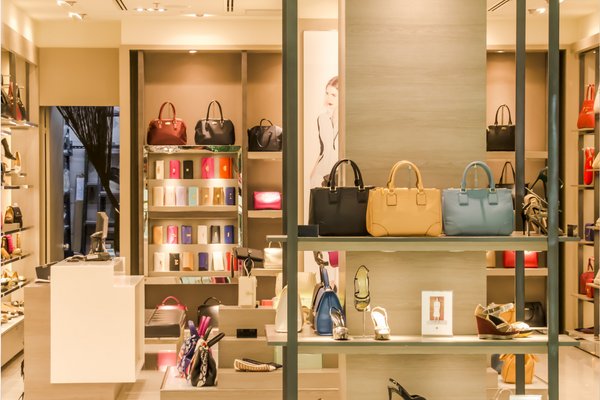Types of Retail Display: What works best?


A huge part of your in-store marketing and visual merchandising comes in the form of different types of retail display. Carefully curated, visually appealing ways to grab your customer’s attention, promote your products, highlight offers and encourage more purchases. With most stores having varying layouts and sales opportunities, in this blog, we unpick the different types of retail display available and when and where you should use them. If you’re looking to wow your customers from the street, stop them in their tracks as they peruse an aisle, or coax them into a last-minute bargain buy, these retail displays are the answer.
A retail display is a piece of physical marketing, fixture or in-store area designed to attract and engage customers, showcase merchandise and drive more purchases. It can be almost anything that presents or promotes your products or services.

Now let’s look at some of the most widely used, and effective, types of retail display.
An Entryway Display is located at the entrance of a store and grabs the attention of customers as they arrive. They can take many different forms, from freestanding shelving units and signage to tabletop displays.
These displays are particularly effective when showcasing new products, seasonal goods or the best promotions in the store. You want your customers to walk in and think, “Oh, it is *enter seasonal holiday here*, I may as well pick up *enter appropriate product here*!”. They are great for showcasing discounted items. You can also use them to make customers aware of larger sales or campaigns happening inside the store.
Entryway Displays are flexible in design and allow you to be creative with visual merchandising. They encourage impulse buys from browsing shoppers or those who were looking for specific products. They are great if you do not have the opportunity to display certain items or offers in your window displays.
With high footfall passing by, Entryway displays can quickly get messy and need restocking. They need regular refreshing and maintenance.
A Standalone Display is exactly what it says on the tin – a freestanding display unit (or FSDU) that holds merchandise and can be placed anywhere in the store.
FSDUs are great for highlighting specific brands and for showcasing seasonal products anywhere in your stores.
You can get creative and have bespoke artwork on these standalone displays. They also offer the chance to experiment with promoting products in different locations – possibly away from competitors or near other related products as a cross-sell opportunity. With a solid printed structure, they can show marketing messaging on every side and capture customer attention from all angles.
Standalone displays can be more costly than other displays. If they become damaged or worn, they will need replacing.
Another type of freestanding display unit is a Dump Bin. Rather than shelving, these are usually a container filled with a large quantity of loose products.
Dump bins are great in high-traffic areas to pause shoppers and encourage impulse buys of discounted, seasonal or surplus stock. As they convey a sense of urgency and a ‘bargain’, they are not an appropriate retail display for all retailers.
While dump bins will need regular re-stocking, a huge advantage is they don’t tend to need tidying! They are also versatile and can be a simple basket with some signage or a more complex printed structure with bespoke artwork on all sides.
Printed dump bin displays can get damaged and need replacing. They also need regular restocking. Not appropriate displays for all retailers.
The main purpose of your Window Display is to convince passing foot traffic to spin on their heels and head straight into your store. Your window should provide a taster of all the exciting offerings you have inside.
Window Displays should showcase your brand and highlight your timely or seasonal product offerings. Present exactly what makes you unique on the high street. For best results, you should understand each store’s unique location and window sizes so that you can optimise the display for each one. Have a clear concept and tell a story using a mix of emotive posters or imagery, props, great lighting and products at eye level with a focal point.
Window displays allow for lots of creativity!
It can be hard to recreate an impactful window display across varying size windows across all your stores unless you have a great store profile management tool. To make the best impression, you need to localise your marketing.
Endcap Displays are situated on the end of an aisle. They offer the chance to be more creative with product merchandising. Let them highlight your best promotions.
Endcaps are particularly effective at drawing in customers as they switch aisles. Use them to show a snapshot of what is housed on the next aisle or to promote a single product or brand.
Endcap displays can be flexible in design and can be really creative and attention-grabbing.
Printed cardboard displays can get damaged and need replacing, so it’s critical to audit your campaign regularly.
Shelf Talkers, Wobblers & Aisle Fins are smaller paper, cardboard or plastic printed signage which can be used on shelving, clothing wracks or other displays to help products stand out. Particularly effective in supermarkets, they draw attention to specific products in a sea of choice. Rather than being stationary, wobblers get their name from the movement they make on the shelf. The ‘wobble’ further catches the eye as shoppers walk past.
Use these smaller display tools to draw attention to new products or offers or for seasonal decoration. Aisle fins are great at signposting customers to product categories and giving additional brand information. Use shelf talkers and wobblers to signpost items in promotions and to make shoppers aware of discounts. Be clear with your message and don’t include too much information.
They make certain areas in your store stand out and can highlight your deals. If a generic design is used (for example, ‘Sale’), these display pieces may be able to be used for more than one campaign. They can also improve the customer experience by helping shoppers locate items and better understand your promotions.
As they are often positioned in front of products and stand out from shelving, these printed signs can easily get damaged and need replacing. They could easily be moved or placed far from your merchandise if not implemented with care, so you must check display compliance regularly. Small writing or too much information can easily be lost due to their size and positioning.
Gondola Displays allow for products and marketing materials to be arranged relatively quickly for display. Normally made up of a wall-like base with vertical slats for shelving or hooks (sometimes double-sided), these freestanding units can hold or hang varying-size products.
Due to their flexibility, gondola displays are ideal for seasonal items or limited promotions. They are also great at encouraging impulse buys at the end of aisles.
Gondola displays are really versatile. As most retail stores will have shelving units, they fit in almost every location. You can easily change them to suit different products and maximise shelf or hanging space. They can be double-sided and work well in most store spaces. Plus, hanging items on gondola hooks means they don’t gather dust like shelves!
They are not always accessible to all shoppers. Hanging items can get easily tangled and end up looking messy. You will need specialists to hang graphics from ceilings which can become expensive.
For a portable display, Banner Stands are pull-up signs that offer a large area for graphics and information.
Use them at store entrances to make announcements – such as sales or product launches. They are also a great retail display to tell brand stories or guide customers to what’s on offer.
Banner Stands can improve the customer experience by directing customers and providing additional information. They also don’t take up much space and are relatively inexpensive, so are ideal for short-term communications.
They don’t hold any merchandise. They can look a bit cheap and can be easily damaged.
Signage, or any printed graphics displayed in your stores, is extremely versatile and can do pretty much everything in your locations. From highlighting your promotions and encouraging sales to informing customers and conveying a certain look or feel. You can choose from a huge array of styles for different purposes, including countertop posters, A-frames, large lifestyle wall graphics, overhead posters and more.
Signage can act as a display on its own or enhance your larger retail displays with emotive graphics and information. Use signage to add interest to tabletop displays, clothing wracks and display cabinets. Just like your structure-based displays, understanding the available areas to display signage in each unique store is key to creating a cohesive and enjoyable store experience for your customers.
It’s incredibly effective. You can be as creative as you want with its design and include QR codes and other techniques to better engage with shoppers. It’s easy to transport and can be changed and updated quickly. You can amend campaign materials easily to reflect local customer demand or to keep up with your competitors. Signage is less expensive than lots of other forms of retail advertising.
While some in-store signage can be more robust, paper-based signage can get damaged easily. You will want to be able to replace it quickly to ensure your stores look tip-top. Larger signage may need third parties to install. Accurate execution is vital to preventing any marketing or way-finding mishaps, and this relies on great communication with your store teams.
Choosing the right type of retail display in each situation is critical to drive footfall, increase impulse purchases, and raise brand awareness. But there’s much more to it than just choosing the right display type. You need to consider placement, messaging and design to ensure you capture attention. And the best-laid plans often end in tatters, so ensuring accurate production, distribution and execution to every location is critical.
With the right types of retail display executed in the right locations, the results can be incredible. Read our guide to creating brilliant retail displays here.
Looking for some help planning and executing different types of retail display in your stores? We send out regular in-store marketing tips via our mailing list. Sign up now.
 Retail, Thought Leadership
Retail, Thought Leadership
As the retail media landscape evolves, retailers are looking where to focus their investments, and...
 News, Retail, Thought Leadership
News, Retail, Thought Leadership
I didn’t choose to acquire this company based on data—it was personal. My grandparents ran...